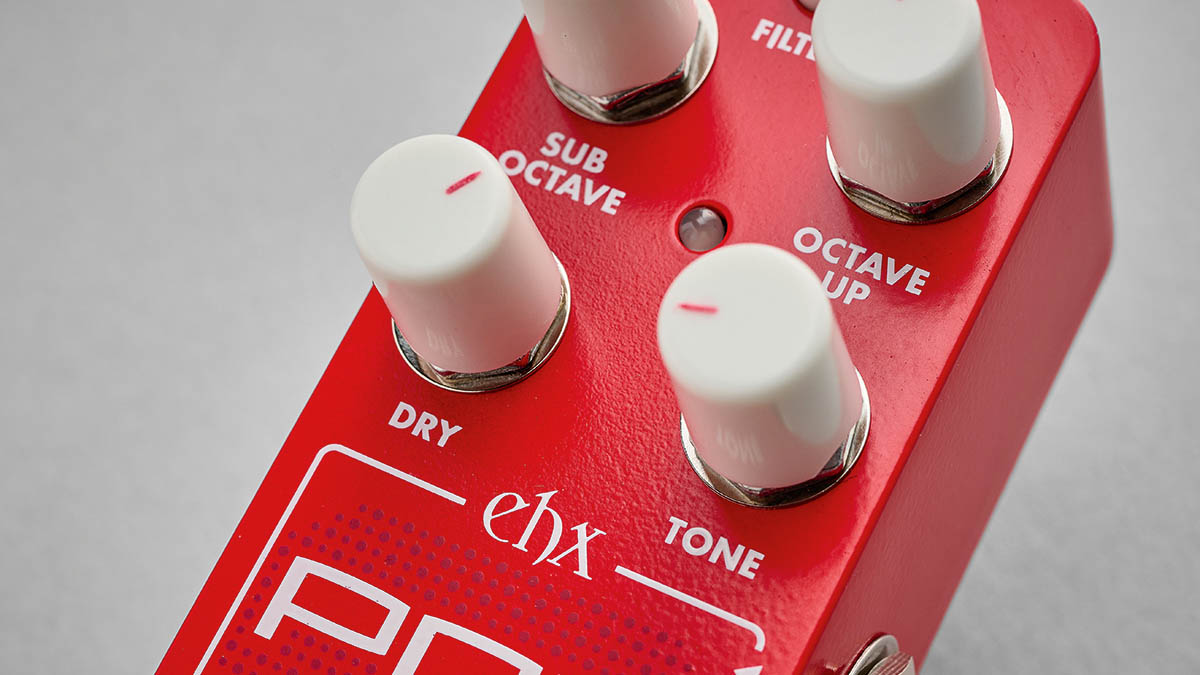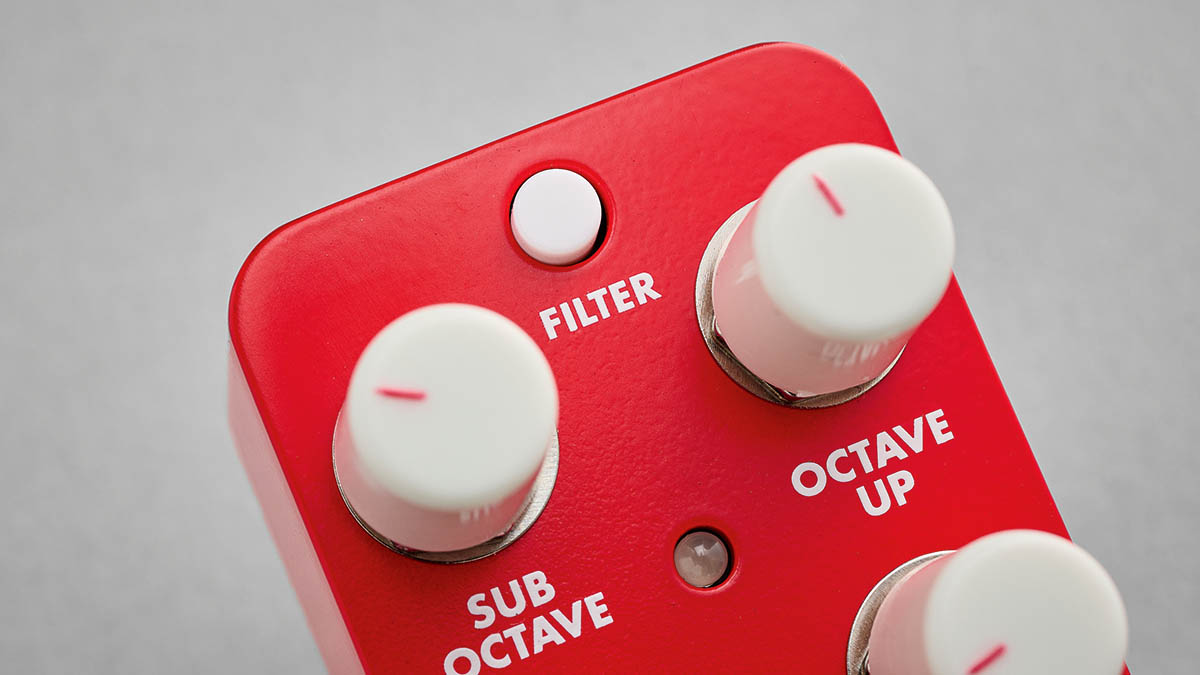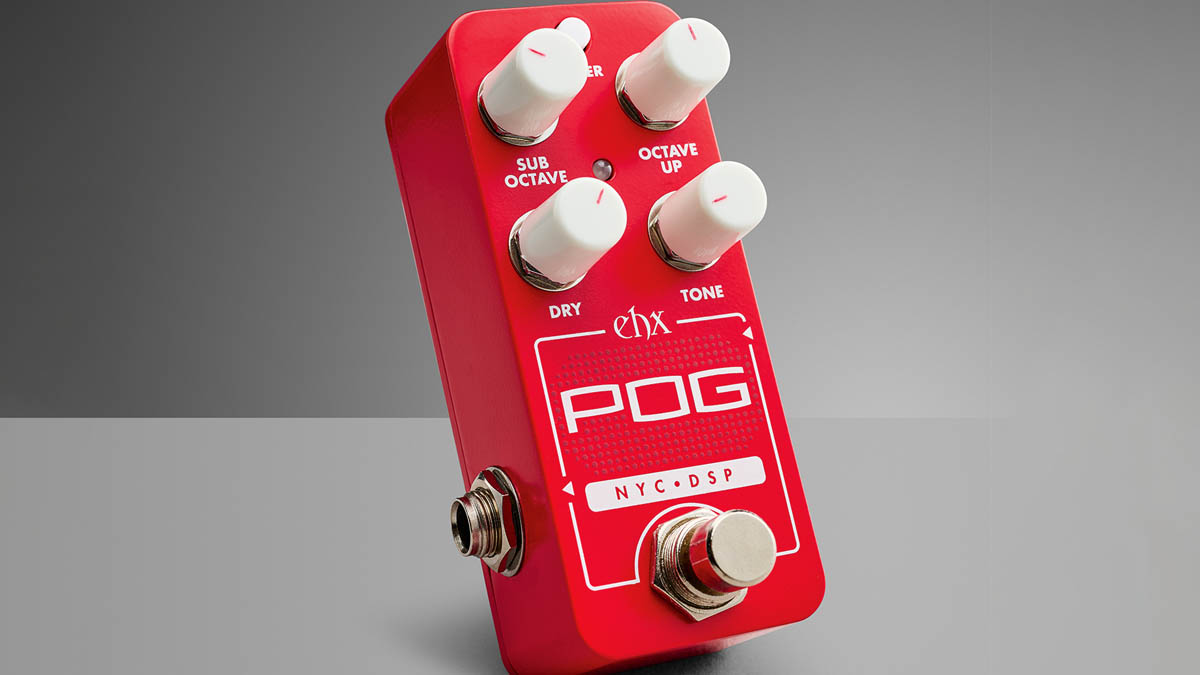Guitar World Verdict
The smallest POG ever and yet still capable of some transformative sounds, the Pico version of one of EHX's most unorthodox and brilliant designs is a no-brainer for those with crowded 'boards.
Pros
- +
Excellent sounds.
- +
Quality tracking.
- +
Small.
Cons
- -
No split outputs.
You can trust Guitar World
You should be familiar with the Electro-Harmonix POG – it’s the Polyphonic Octave Generator that set the standard for multi-string, multi-octave layering and has graced the pedalboards of legends ranging from Jack White to Joe Satriani.
Now, EHX has shrunk the POG down to its smallest form to date (92 x 50 x 50mm) in the Pico POG. If you haven’t come across it before, in a nutshell the POG gives you an octave below your guitar’s pitch, as well as an octave above. It can do this simultaneously, while also blending in the sound of your original pitch, giving you three octaves to play with. But as well as this it can track all six of your strings at once.
So, naturally, this lends the Pico POG to many different applications, from faux bass guitar, to simulated 12- or, technically, 18-string sounds. There’s a level control for each of the three signals, and EHX has equipped this version with a multi-function Filter switch, which changes the functionality of the Tone control.
In regular ‘tone’ mode, it functions as you’d expect with a flat response in the middle, and a cut to the bass while boosting the high-end as you turn it clockwise, with the opposite once you turn it anti-clockwise. Then there’s a low-pass filter, which cuts the high-end for the effected signals, and a high-pass mode which cuts the low-end of the same signals.

Now, there’s a lot of tonal experimentation to be had from the Pico POG. Everything from synthy stacked lines to organ-style tones are easily and quickly achievable.
Pair it up with some OD and fuzz and you’re into Josh Homme/Jack White territory. There are Jimi-style octave-up tones to be had, and some convincing Byrds-y 12-string guitar sounds, particularly when you start playing with the filter.
But the main concern we had before plugging in was whether EHX could pack the POG DNA into such a small format. The answer is yes, pretty much. It tracks very well, and there’s plenty of control to hand, and while it omits the split outputs of some of the other POG versions, we think it delivers the key sounds.
All the latest guitar news, interviews, lessons, reviews, deals and more, direct to your inbox!

Price-wise, there’s not a lot of difference between the Pico, Micro and Nano versions of the POG, so if you only want it for a few songs, or you want to have more than one, you’ll be able to do it without dedicating loads of pedalboard space.
Specs
- PRICE: $240 / £199
- TYPE: Polyphonic Octave Generator
- CONTROLS: Sub octave, octave up, dry, tone, filter mode switch
- SOCKETS: Input, output, power
- POWER: 9v PSU (included)
- CONTACT: Electro-Harmonix

Stuart has been working for guitar publications since 2008, beginning his career as Reviews Editor for Total Guitar before becoming Editor for six years. During this time, he and the team brought the magazine into the modern age with digital editions, a Youtube channel and the Apple chart-bothering Total Guitar Podcast. Stuart has also served as a freelance writer for Guitar World, Guitarist and MusicRadar reviewing hundreds of products spanning everything from acoustic guitars to valve amps, modelers and plugins. When not spouting his opinions on the best new gear, Stuart has been reminded on many occasions that the 'never meet your heroes' rule is entirely wrong, clocking-up interviews with the likes of Eddie Van Halen, Foo Fighters, Green Day and many, many more. If he's not playing the guitar, you'll likely find Stuart behind the kit playing Valerie to newlyweds.

